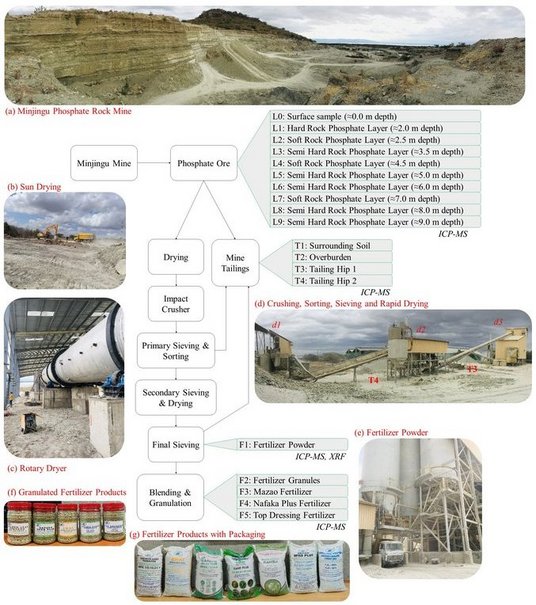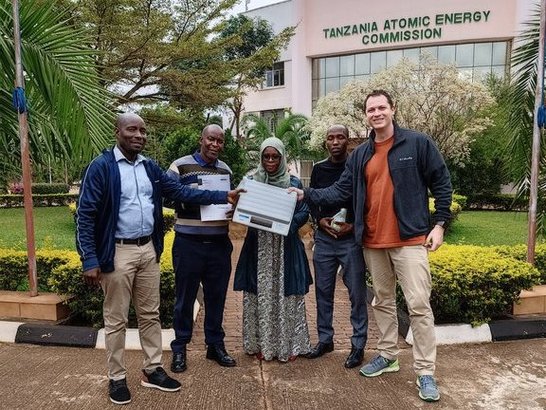
Rethinking Minjingu Phosphates | REE_Use

Cooperating countries: Tanzania and Austria
Coordinating institution: University for Continuing Education Krems
Partner institutions: Tanzania Atomic Energy Commission
Project duration: 1 November 2020 - 31 October 2023
Budget: € 46.200,00
Project summary
The Minjingu phosphate rock deposit in Northern Tanzania is unprecedented in its mineral composition. Labelled a phosphate deposit, since it contains elevated concentrations of P2O5 (roughly 30 %), it could also easily be labelled a rare earth element (REE) deposit, since it shows one of the highest REE concentrations in Africa, and an uranium deposit, since it shows uranium concentrations up to 5 times higher (390 mg uranium per kg phosphate rock on average and up to 600 mg uranium per kg phosphate rock) than those of the neighboring commercial uranium mines in Namibia (100-120 mg/kg uranium concentration on average). Despite the high concentration of toxic and radiotoxic elements, in particular uranium, Minjingu phosphate rock is used to produce five different fertilizer products (i.e., fertilizer powder, fertilizer granules, Mazao, Nafaka and Top Dressing) that are successfully marketed and sold in South-East Africa (mostly Tanzania, Kenya, Uganda, Ruanda, and Zambia). The region is dependent on Minjingu phosphates. By that not selling Minjingu phosphate fertilizer products (as was done at the beginning of 2000, due to radiotoxic concerns) is not an option since the region is highly dependent on inexpensive locally produced fertilizer. In preparation for this project we systematically analyzed (i) major trace elements (Li, Be, Na, Mg, Al, Si, P, K, Ca, Ti, Cr, Mn, Fe, Co, Ni, Cu, Zn, Ga Rb, Zr, Nb, Mo, Cd, Sb, Ba, Ce, Au, Pb, Bi), (ii) rare earth elements (REEs) (Y, La, Ce, Pr, Nd, Sm, Eu, Gd, Tb, Dy, Ho, Er, Tm, Yb, Lu) as well as (iii) uranium and thorium in 10 Minjingu phosphate rock layers, 4 Minjingu mine tailings and the 5 presently produced Minjingu fertilizer products (fertilizer powder, fertilizer granules, Mazao, Nafaka and Top Dressing).
In addition, we started looking into an alternative, new innovative process for radiotoxic uranium and REE removal during Minjingu phosphate rock processing, which still promises an inexpensive and radio toxically unobjectionable fertilizer product. The Tanzania Atomic Energy Commission (TAEC) responsible for radiotoxic materials in Tanzania is highly motivated to introduce this process to the market. It is a balancing act to decide how to best process and use Minjingu phosphate rocks without disenfranchising or even alienating local farmers, provoking food shortages in the region. Together the Transdisciplinary laboratory – Sustainable Mineral Resources (Td-SMR) of Danube University Krems (DUK) and the Tanzania Atomic Energy Commission (TAEC) aim within this project to find the right tone and strategy to fully utilize the treasures found in Minjingu phosphate rocks.
Contribution to Sustainable Development
The core aim and outcomes of the project relates to the sustainable recovery of valuable potentially hazardous by-products from Minjingu phosphate rocks. This directly contributes to a range of SDGs, namely SDG 1, 2, 3, 7, 9, 12, 13, 14, 15, and 17 as indicated below.
